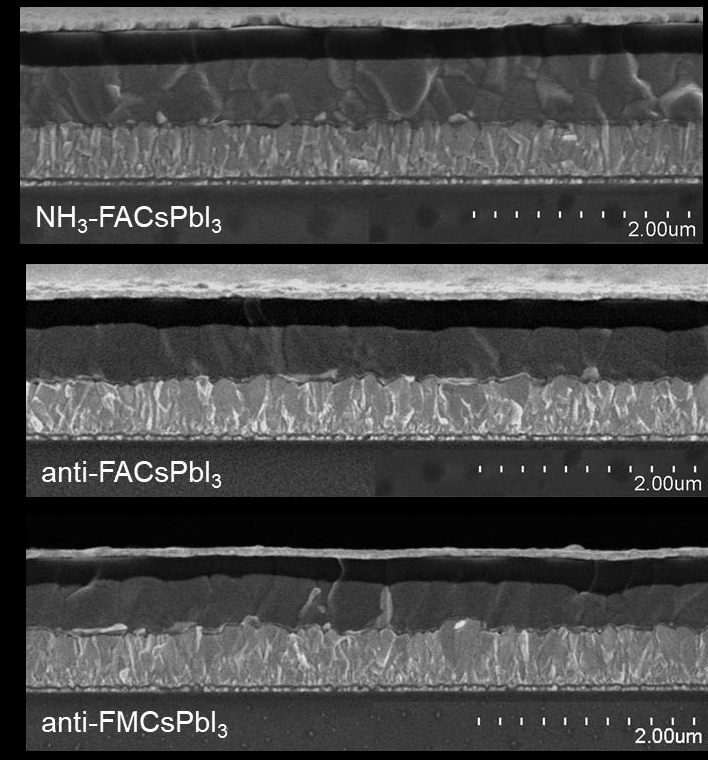While perovskite solar cells appear well on their way to commercial production, there is still a wealth of different materials and approaches to improve both their performance and long-term stability – and the limit for either of these characteristics is far from being reached.
Much of the earlier research into perovskite solar cells focused on a material called methylammonium as one element of the perovskite layer, and the best performing solar cells made so far have been based on this. Today, however, some scientists are convinced that replacing this with a different material, formamidinium (Fa), can offer a better balance of high efficiency and strong stability.
One approach to improving perovskite solar cell performance is to add a “healing” stage after the film is formed, to help iron out defects left behind in the structure during formation. A method using methylamine gas has shown promise for methylammonium-based films, but is not suitable for those working with Fa. With this in mind, a group of scientists led by the Qingdao Institute of Bioenergy and Bioprocess Technology in China set out to better understand the reactions at work during Fa film formation, and to find a suitable healing process to improve it.
Observing the reactions, they were able to calculate that ammonia might have the desired healing effect, and set out to test this theory. “We have shown that the degradation of formamidinium-containing perovskites is caused by a reaction between the formamidinium cation and aliphatic amines, producing ammonia,” explained Wang Xiao, a scientist at Qingdao.
The scientists fabricated the films with the added healing process – noting that a decrease in temperature down to -15 C would be needed to optimize the healing, and used these films to make perovskite solar cells. The best of these cells achieved a conversion efficiency 23.21%, and an efficiency of 22.22% was certified by the Chinese Academy of Sciences.
The healing method is described in full in “Ammonia for post-healing of formamidinium-based Perovskite films,” which was recently published in Nature Communications. The group is further convinced that its healing process could be applied in large-scale production without disruption to other stages, and also demonstrated a perovskite mini-module with a surface area of 14 square centimeters, which achieved a conversion efficiency of 20.61%.
The group says it will now focus on integrating this process into properly designed equipment that can be integrated into factories and production lines.
This content is protected by copyright and may not be reused. If you want to cooperate with us and would like to reuse some of our content, please contact: editors@pv-magazine.com.




By submitting this form you agree to pv magazine using your data for the purposes of publishing your comment.
Your personal data will only be disclosed or otherwise transmitted to third parties for the purposes of spam filtering or if this is necessary for technical maintenance of the website. Any other transfer to third parties will not take place unless this is justified on the basis of applicable data protection regulations or if pv magazine is legally obliged to do so.
You may revoke this consent at any time with effect for the future, in which case your personal data will be deleted immediately. Otherwise, your data will be deleted if pv magazine has processed your request or the purpose of data storage is fulfilled.
Further information on data privacy can be found in our Data Protection Policy.